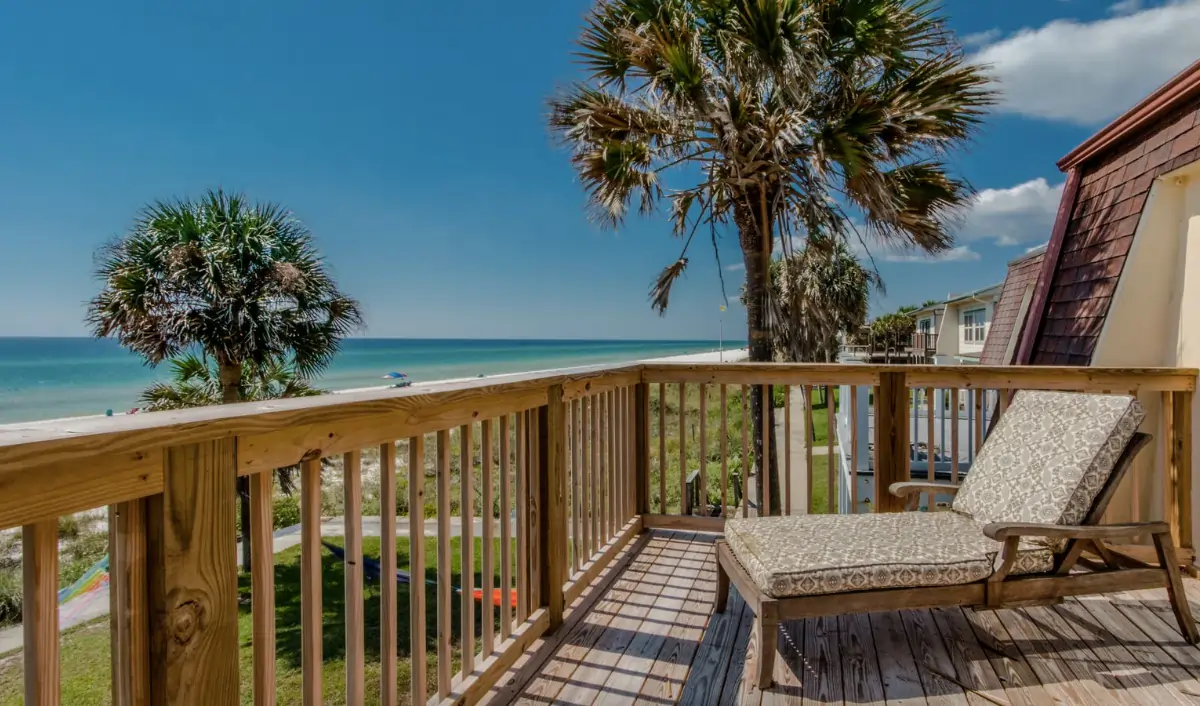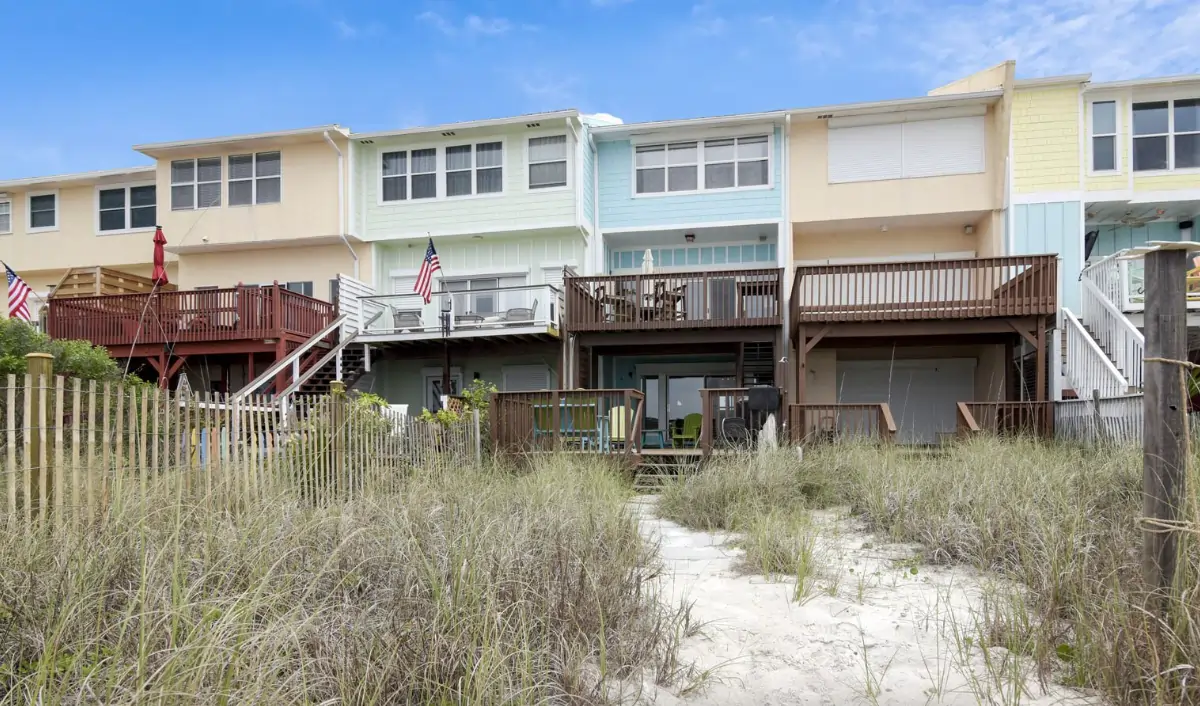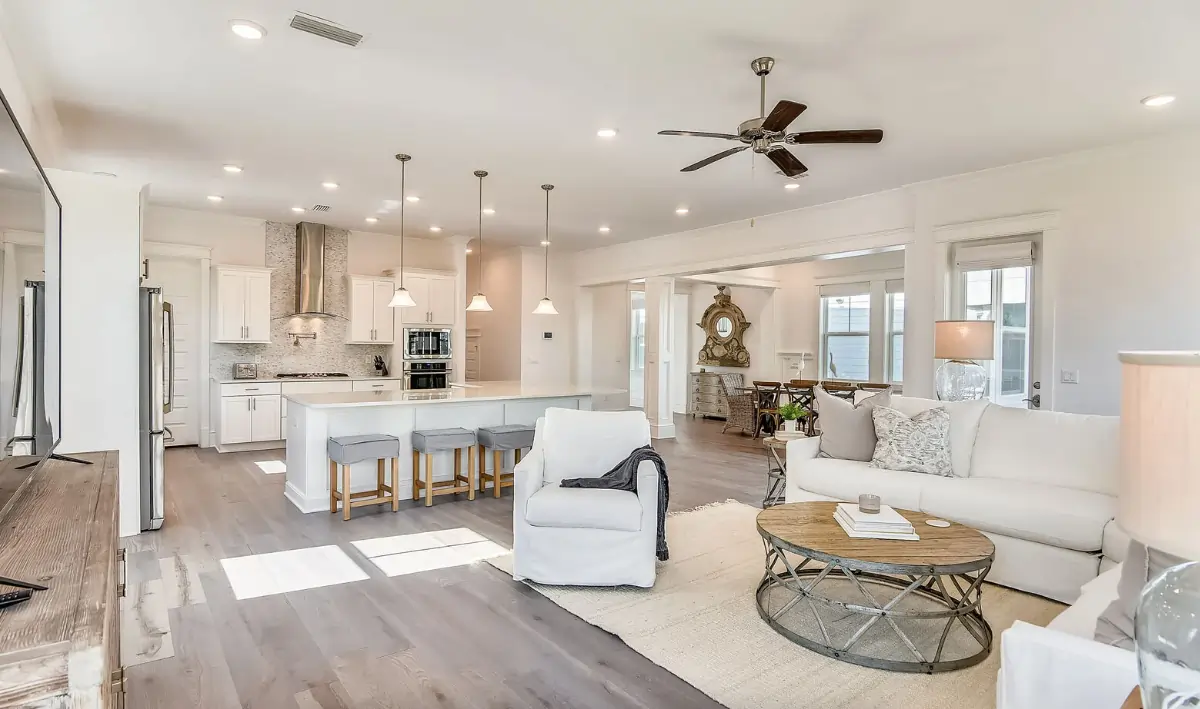Setting the right nightly fee for your 30A rental is more complex than it might seem. Various factors come into play, including the nature of your rental. Beachfront condos and properties with spectacular beach views generally fetch higher rates, especially if they offer amenities like pools and other exceptional features. The number of bedrooms, guest capacity, and external factors also impact the rates.
At I Love 30A Property Management, we’ve managed rental properties in 30A for two decades, and we’ve learned that pricing requires continuous attention and daily adjustments. This ongoing process of optimizing and adjusting prices to maximize earnings is known as “revenue management.” Mastering this skill can lead to significant profits from your beach rental.
For valuable tips on managing your rental and engaging content for guests vacationing on 30A, be sure to visit our blog.
In this write-up, we’ll provide you with a Revenue Management 101 for the 30A market and help you understand the key aspects of this topic.
The Importance of Revenue Management: Why Does it Matter?
In a nutshell, revenue management involves determining the right price at the right time for the right guest. It’s about keeping your rates flexible, ensuring you charge enough to stay competitive and fully booked. You can think of it as a powerful tool to elevate your rental investment to a whole new level.
Below, we’ve listed 7 steps to help you implement revenue management and elevate your rental’s success.
Step 1: Find the Ideal Pricing Tools
Understanding all the factors that impact pricing can be quite challenging. Thankfully, dynamic pricing software utilizes past and real-time data, compares similar rentals in your area, and monitors demand to determine the ideal pricing for your beach rental at any given time.
Based on our experience, these tools manage about 70-80% of the tasks. While they do come with a cost—typically around 10% of your earnings—the extra income they generate often justifies the expense.
How Pricing Tools Can Help:
- Adjust pricing based on the level of interest in your location.
- Find the ideal rate for any season.
- Advise on optimal booking windows according to the season.
- Handle vacant days and fill gaps in your calendar.
- Track major nearby events that could affect bookings.
- Manage sudden changes and rebooking to ensure steady earnings.
Our top picks for pricing tools are Wheelhouse, PriceLabs, and Beyond. Here’s a quick rundown of each:
- Beyond: Easy to use and ideal for those who prefer a “set it and forget it” approach (though we recommend staying involved). It efficiently covers essential features but offers limited customization.
- PriceLabs: A powerful tool that provides extensive customization and flexibility. It requires some time to maximize its potential but works seamlessly with other systems, giving you strong control over pricing strategies.
- Wheelhouse: A balanced option between the other two. It’s effective for boosting earnings but requires weekly adjustments to maintain optimal performance. It also integrates well with other tools, enhancing overall efficiency.
Heads up: While these tools are incredibly helpful, they can’t do everything on their own. To maximize earnings, you need to be actively involved, treating pricing management like a part-time job. The type of rental you have and the amenities you offer are crucial — these features will make your property stand out among the competition.
Step 2: Build a Competitive Set
Competition plays a vital role in any business, especially in the rental market. Creating a “comp set,” or competitor set, is a smart way to stay competitive. This involves identifying similar rentals in your market that match your property’s location, size, amenities, target guests, and overall positioning. These are your direct competitors.
Once identified, use these comps to compare your rental. The goal is to observe their performance and make necessary adjustments to stay competitive.
The pricing tools mentioned above are excellent for establishing a comp set and analyzing their data for smart decision-making. However, it’s essential to understand the reasoning behind your choices.
Key Factors to Consider When Building Your Comp Set:
- Location: Look into nearby properties to understand the market dynamics.
- Amenities: Compare your offerings to those of similar properties in your area.
- Guest Capacity and Size: Compare the size of your rental with others to ensure you’re making the best use of space. Think about maximizing sleeping arrangements, like a 2-bedroom for six or a 3-bedroom for eight.
- Performance: Stay on top of critical metrics like revenue, average daily rate (ADR), and occupancy rate. The tools we mentioned can assist with these statistics, including competitive data.
- Quality: Evaluate guest reviews and ratings for your property and other rentals in your comp set to understand guest opinions.
Step 3: Establish Minimum and Maximum Rates
Determining the cost per night for your 30A rental starts with establishing your baseline price by calculating your expenses. Identify the minimum amount you need to charge to avoid losses, then add a reasonable profit margin to set your minimum rate. Make sure never to price below this minimum.
With your comp set in mind, use that information to create a competitive base price. Consider viewing your property from the perspective of a first-time guest.
Remember that occupancy rates will differ across seasons, so it’s wise to set both minimum and maximum prices. Use the minimum rate during slower periods and for filling last-minute gaps—reduce it as needed but always adhere to the “no loss” rule.
Beyond the seasons, other factors like special events, holidays, and differences in weekday versus weekend pricing also play a significant role in most markets.
Regular adjustments are necessary for these factors. Using a dynamic pricing tool to automate rates across your booking channels is a smart strategy.
Insider Tip: Experiment with different nightly rates to find the ideal pricing strategy. After making adjustments, observe the market’s response and the impact on your booking rate.
Step 4: Establish Your Own Guidelines
There are several approaches to enhance your revenue strategy. Here are a few options to consider:
- Increase Rates Beyond Your Typical Booking Window: Raise prices for reservations outside your usual timeframe. If bookings don’t come in, you can always adjust later. If they do, that’s a win.
- Last-Minute Deals: If your property remains unbooked within three weeks of check-in, offer discounts to attract last-minute guests and fill vacancies. A small discount can often prompt new bookings.
- Orphan Discounts: Reduce the price for short gaps in your rental calendar, known as “orphans.” These are challenging to fill at regular rates, so offering them at a lower price is better than leaving them empty.
- Length of Stay Guidelines: Determine the ideal length of stay. If the average stay in your market is 3.5 days but guests are interested in shorter stays, consider setting a 2-night minimum to attract more bookings.
- Weekday Promotional Rates: Since weekdays are less popular for beach rentals than weekends, offer reduced prices during the week to attract more bookings during quieter times.
- Extended Stay Discounts: Encourage longer bookings by offering reduced rates for stays of a week or more. This helps fill vacancies and reduces cleaning and operational costs.
Once these rules are set, track the data to see how they influence your rates. Always fine-tune your pricing strategy based on data analysis.
Expert Advice: While setting rules can optimize your strategy, be mindful not to overdo it. Too many restrictions can narrow your target audience and drive away potential guests.
Step 5: Choose the Ideal Channels for Listing Your Rental
Since people search for rentals online, listing your 30A beach rental on several platforms is wise to increase visibility. Fortunately, none of the major platforms require exclusivity, allowing you to promote your rental widely. Generally, the more exposure your rental receives, the greater your chances to charge higher nightly rates.
Still, it’s wise to adopt a tailored strategy and pick the most suitable platforms. Here’s a brief summary of the top online travel agencies (OTAs) in our market:
- Airbnb: This highly user-friendly platform manages most responsibilities, like processing payments and providing insurance. It’s often the first stop for rental seekers.
- Vrbo: In our market, Vrbo stands out as a strong alternative to Airbnb. It excels in more traditional vacation rental locations. Listing on Vrbo also provides exposure on Expedia and Hotels.com, which is a great advantage.
- Booking.com: Despite mainly catering to hotels, this platform has a wide reach. If you’re already on Airbnb and Vrbo, adding Booking.com can expand your potential guest audience.
When developing your online rental listing, remember that it reflects your property. Ensure it contains all the detailed and accurate information about your rental and its terms.
An effective online listing featuring a compelling description and stunning photos can draw more guests and support higher pricing.
Step 6: Build Your Reputation and Gain Momentum
When starting a new rental, there are tactics to draw in bookings and gain traction. A common practice is to compare your 30A rental with similar rentals in your area and price your nightly rate a bit lower.
Both Airbnb and Vrbo offer the option to provide a 20% discount on your first three bookings. This helps offset the initial lack of reviews and starts building your reputation. Positive reviews significantly enhance your credibility and allow more flexibility in increasing your prices.
However, don’t maintain those low prices indefinitely. Once you’ve secured a solid number of positive reviews, it’s wise to reserve this strategy for the slow season.
Step 7: Adopt a Scheduled Review Process
Once all the above steps are implemented, you should start experiencing a healthy number of bookings. Remember, revenue management is a continuous process. To fully optimize your 30A beach rental, closely monitor your occupancy and rates, regularly compare them with the market, and make necessary tweaks.
More Insights from Our Revenue Management Team:
- If your 60/90-day vacancy rate is lagging behind the market, consider reducing your base rate by 5 to 10%.
- If your 60/90-day vacancy rate is at least 10% below the market, consider raising your base rate by 5 to 10%.
- If your 60/90-day vacancy rate is solid but your 30-day vacancy rate is too high, consider applying a manual discount for the next month to address that gap.
It’s important to stay adaptable and forward-thinking to unlock the full potential of your rental.
Bonus Advice: Enhance Your Beach Rental’s Success by Partnering with a Dedicated Revenue Manager
By now, you’ve probably realized that revenue management is a complex challenge for beach rental owners. Using the right pricing tools can assist and provide a 20-30% revenue boost, but having a knowledgeable professional in pricing strategies can make a real difference.
At I Love 30A Property Management, we know 30A “like the back of our hand” and treat your home with the same respect and care as our own.
With 20 years of expertise in providing stellar support to vacation rental owners in 30A, our dedicated team of property managers at I Love 30A is committed to examining market data and booking trends. Their role is to make strategic decisions that optimize your 30A beach rental’s earnings every day of the year.



